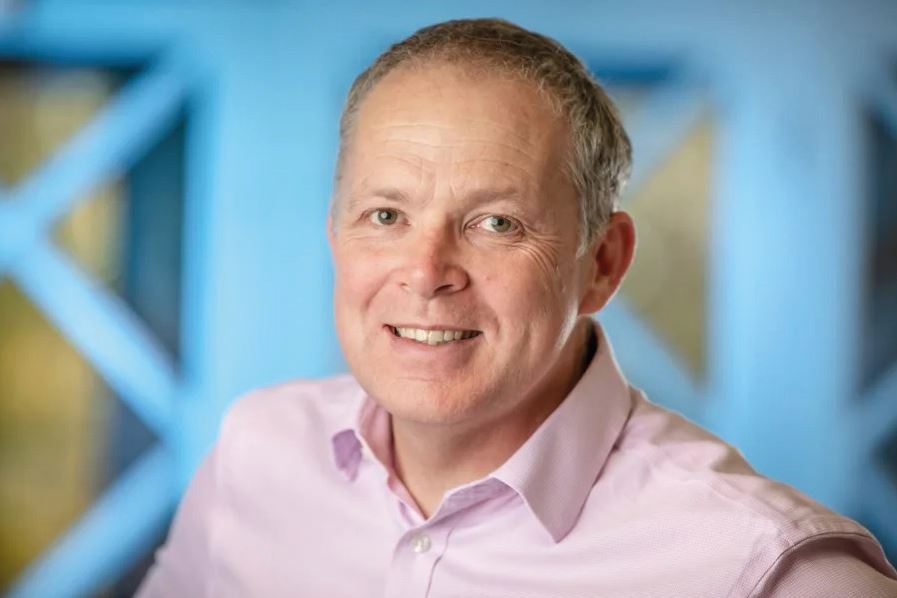
Continuing our new, regular feature where we interview the leading figures behind well-known companies working within the health sector, Jo Makosinski speaks to Matthew Balaam, a partner and healthcare lead at Oxford Architects
Matthew Balaam, now a partner and health sector lead at Oxford Architects, was considering a career in the military after leaving school. However, now one of the leading medical architects in the country, the change of direction is not one he regrets. “When I was 16 or 17, I was thinking about joining the Royal Navy as family members were in the forces and I loved being a lifeguard at Sandbanks Beach in Poole, where I grew up. “But my mother said I should do something with my creative brain. “I went to the BBC to research becoming a set designer and they said ‘you should be an architect so as not to restrict your future career choice’.” Having got good grades at school, but finding those years challenging, Matthew describes his time at Oxford Brookes University in Oxford as ‘life changing’. “It was only when I went to university that I really excelled and put my heart and soul into it my work,” he says.
GETTING NOTICED
“Working hard is my ethos and through that you get noticed.” After his first three years at Oxford Brookes University, Matthew worked as a Part 1 architectural assistant at Western Design Architects in Dorset. He then returned to Oxford Brookes University for his post graduate diploma in architecture and urban design. Matthew started working at Oxford Architects in 1998 and, from that moment, he put everything into a career which would see him become one of the leading designers within the health sector and, more specifically, the mental health arena. “I began by designing residential schemes, science buildings, town centres, and children’s nurseries,” he recalls.
“But I got a feeling for the medical sector when studying for my Part 3 exams, which is the final architectural qualifications. “It really struck a chord with me. “I worked on an end-of-life palliative care facility and realised you can make a real difference to society when working in healthcare. “Oxford Architects had also recently embarked on the Broadmoor redevelopment project and had started working with St Andrew’s Healthcare, a specialist mental health provider. “Through my hard work and diligence one of the partners asked if I wanted to work in the mental health sector, with all the challenges and pressures that would bring.
LEADING THE CHARGE
“I went away for the weekend and on the Monday I said ‘yes’. “This opened me up to the adult forensic pathway, and low-secure
pathway for a mental health charity. “The client soon became aware of my attention to detail and they had a brilliant estates team and we set about producing the medium-secure design guide for St Andrew’s Healthcare.” Fast forward two decades and the design of healthcare facilities has advanced significantly, with the emphasis now on patient-centric designs and therapeutic, hotel-style interiors. “Some of the best years of my life have been in the mental health arena,” Matthew says.“In the early days we were having to cobble together components from different suppliers, and we did not have the likes of the products we have today.
“We helped to design windows, anti-ligature door ironmongery, light fittings, vision panels, handwash basins, and many more products “For me, it is important to collaborate with suppliers who are part of our big team – they are my professionals.”
CHALLENGING THE SYSTEM
Highlights of his career to date include the design of William Wake House in Northampton for St Andrew’s Healthcare and presenting the Broadmoor Hospital redevelopment to Victoria Government, Australia. “Designing the maternity bereavement suite for Hillingdon Hospital with Martin Gilbert was also really rewarding as it supports people at a particularly-harrowing time in their lives,” Matthew said. “I now work with people who want to create therapeutic places that remove the stigma of older mental healthcare facilities, trying to achieve more of a hotel-style environment. “When designing buildings, I aim to design out problems and risk. I put my heart and soul into it and I take a lot of pride in what the practice delivers. “It is the little touches that really make a difference.”
A TEAM PLAYER
Moving forward, Matthew is planning to continue pushing the boundaries of healthcare design and is also moving into creating environments for young people with special educational needs within the education sector. “I try to have fingers in many pies and think of myself very much as a team player,” he said. “I’m always thinking about the vulnerable and how to change society for the better. And I am trying to help nurture the next generation of architects coming through the practice to do the same.”
Quick-fire questions?
I really don’t get much time to watch TV and usually the programmes we watch are dictated by my wife and children!
I have two young daughters, so Mamma Mia is consistently played. During my misspent youth I was a fan of The Chemical Brothers
I really like Formula 1 and rowing has always been in my blood
Sandbanks Beach in Dorset
Croyde Beach, Devon
Destroying, then fixing the house. It’s a never-ending task!
A paper round
Thai food
My parents called me ‘Bean’ (because I was tall and skinny as a child) and ‘Wookey’ as my wife met me the same week I was caving in Wookey Hole Caves
cycling
